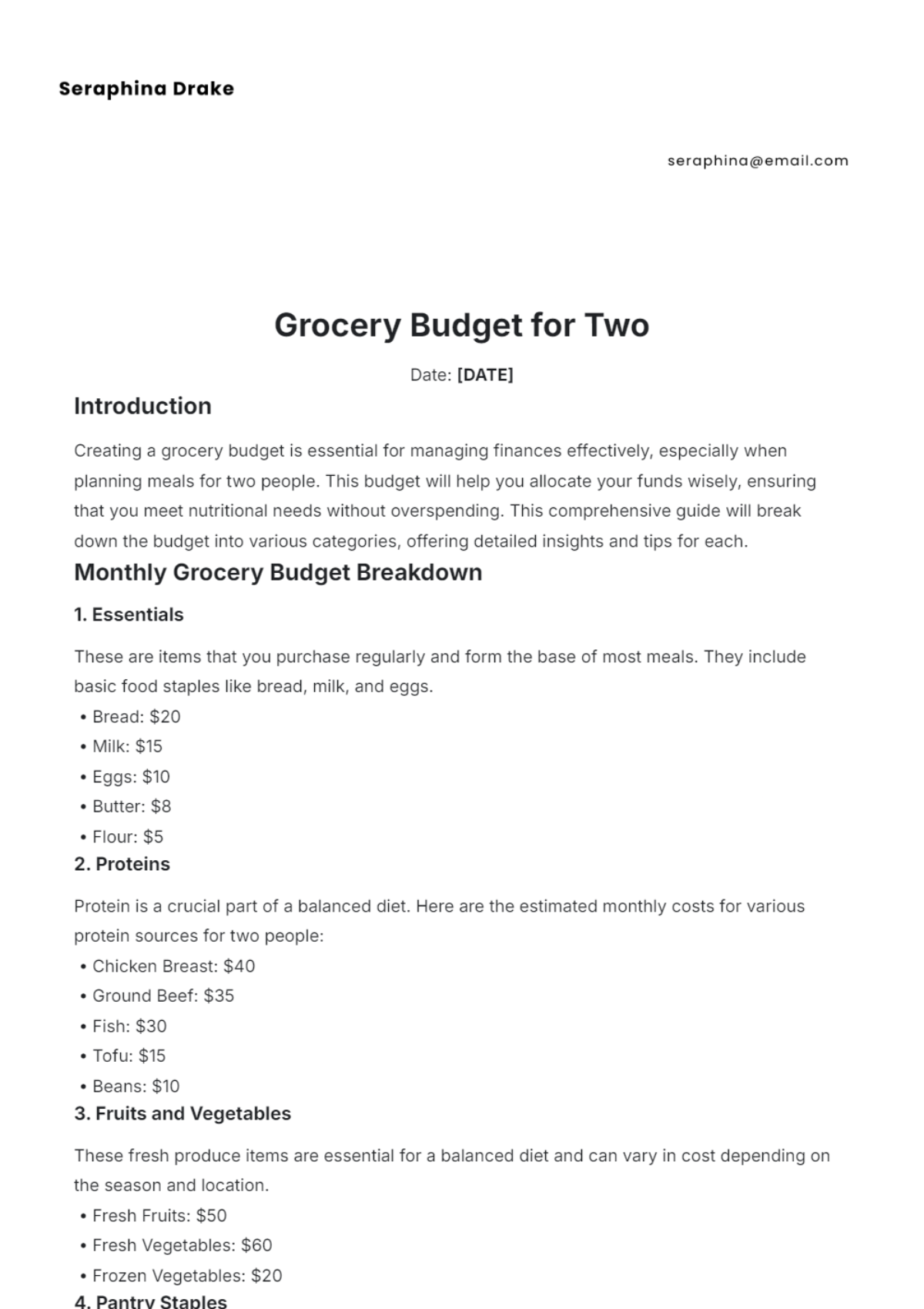Grocery Budget for Two
Date: [DATE]
Introduction
Creating a grocery budget is essential for managing finances effectively, especially when planning meals for two people. This budget will help you allocate your funds wisely, ensuring that you meet nutritional needs without overspending. This comprehensive guide will break down the budget into various categories, offering detailed insights and tips for each.
Monthly Grocery Budget Breakdown
1. Essentials
These are items that you purchase regularly and form the base of most meals. They include basic food staples like bread, milk, and eggs.
Bread: $20
Milk: $15
Eggs: $10
Butter: $8
Flour: $5
2. Proteins
Protein is a crucial part of a balanced diet. Here are the estimated monthly costs for various protein sources for two people:
Chicken Breast: $40
Ground Beef: $35
Fish: $30
Tofu: $15
Beans: $10
3. Fruits and Vegetables
These fresh produce items are essential for a balanced diet and can vary in cost depending on the season and location.
Fresh Fruits: $50
Fresh Vegetables: $60
Frozen Vegetables: $20
4. Pantry Staples
Items that have a longer shelf life and are fundamental in cooking various meals, such as spices, oils, and canned goods.
Olive Oil: $10
Spices: $15
Pasta: $15
Rice: $10
Canned Tomatoes: $10
5. Snacks and Beverages
These include supplementary items that are not necessarily essential but add to the variety and enjoyment of your meals.
Snacks: $25
Coffee: $15
Tea: $10
Juice: $10
Monthly Grocery Budget Summary
Category | Estimated Cost |
|---|---|
Essentials | $58 |
Proteins | $130 |
Fruits and Vegetables | $130 |
Pantry Staples | $60 |
Snacks and Beverages | $60 |
Total | $438 |
Tips for Staying Within Budget
1. Meal Planning
Planning your meals for the week can help you avoid unnecessary purchases and reduce food waste. Make a list of ingredients you need for each meal and stick to it while shopping.
2. Buying in Bulk
Purchasing items in bulk, especially non-perishables, can often save money in the long run. Consider joining a wholesale club or looking for bulk deals at your local grocery store.
3. Seasonal Shopping
Fruits and vegetables can be significantly cheaper when bought in season. Plan your meals around seasonal produce to save money and enjoy fresher ingredients.
4. Use Coupons and Loyalty Programs
Take advantage of coupons and loyalty program discounts offered by grocery stores. These can add up to significant savings over time.
By following this budget and these tips, you can manage your grocery expenses effectively while enjoying a variety of nutritious meals.
Prepared by: [YOUR NAME]





